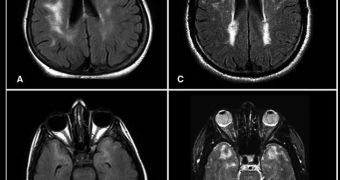A survey of healthcare experts, clinicians and their patients has revealed that about 60 percent of bipolar disorder (BP) cases are not correctly diagnosed from the get-go. In other words, only 40 percent of all clinicians make a correct diagnostic when dealing with this condition.
Most healthcare experts were also determined to operate under a heuristic bias, which means that they attempt to solve their patients' issues through a trial-and-error approach.
The main implication of these discoveries is that people who have just fulfilled the threshold criteria for receiving the BP diagnostic are at a very high risk of being under-treated.
Clinicians were found to make the most accurate diagnostics only when the patients that sought their counsel exhibited the majority of symptoms associated with this disorder.
“Given the high prevalence and the high suicidal risk of bipolar disorder, it seems essential that clinicians are well trained to diagnose bipolar disorder correctly,” says study leader Larissa Wolkenstein, who is based at the University of Tübingen, in Germany.
She and her team published the results of their discoveries in the latest issue of the esteemed Journal of Affective Disorders, PsychCentral reports.
The group says that one of the most common signs that clinicians are employing a heuristic bias in establishing their diagnostics is the fact that they lend a disproportionate weight to symptoms such as reduced sleep, which are considered one of the hallmarks of bipolar disorder.
During the survey, some 204 psychotherapists were given a case vignette that allegedly represented a patient who fulfilled the criteria needed for the BO diagnostic to be placed.
The symptoms were taken from the Diagnostic and Statistical Manual of Mental Disorders (DSM-IV), the main guide for clinicians today. The hypothetical patients exhibited depression symptoms, and met three of the seven criteria the DSM-IV lists for BP.
Forty-one percent of participants correctly identified the disease. Fifty-nine percent set a different diagnostic, mainly unipolar depression. In all fairness, 3.8 percent (7 clinicians) from the second group made notes acknowledging that they may in fact be dealing with BP.
“Given that therapeutic strategies depend on the assigned diagnostic label, which might not only be inefficient but even harmful when making a wrong diagnostic decision, it becomes clear that a standardized diagnostic proceeding is in great demand,” Wolkenstein and her team write in the journal entry.

 14 DAY TRIAL //
14 DAY TRIAL //